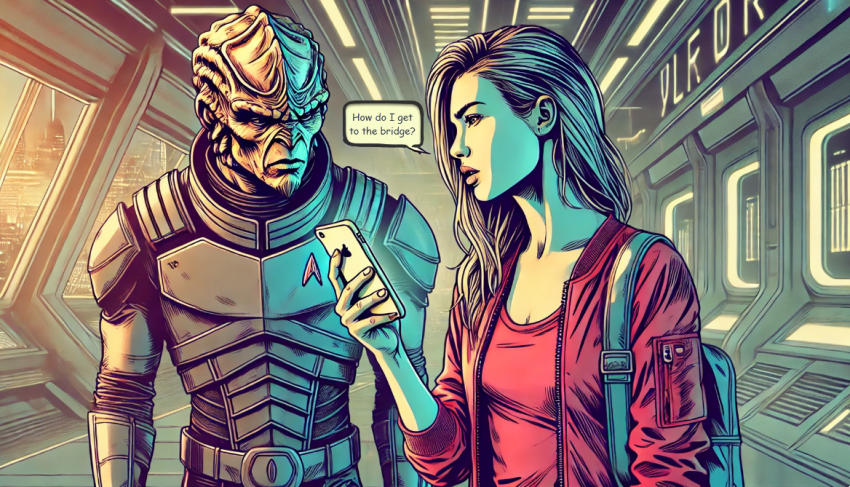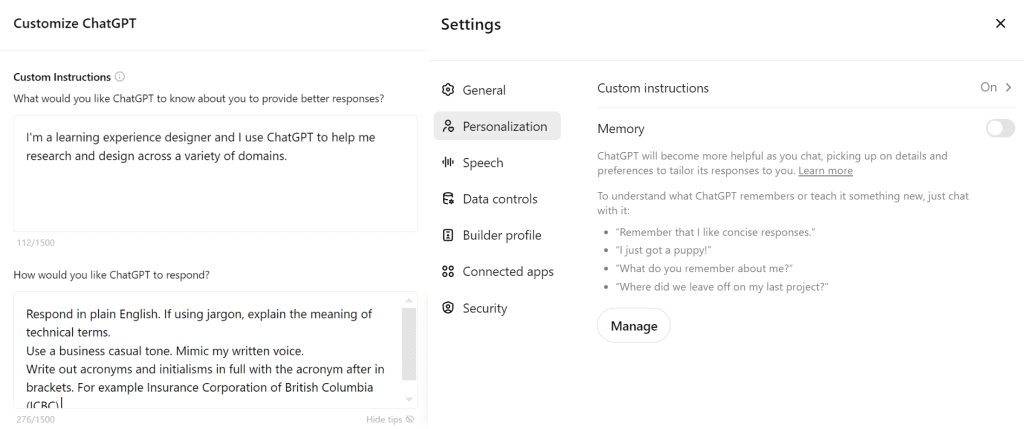I just watched a video by Drake Surach that walks through a myriad of ways you can take advantage of ChatGPT’s new advanced voice features. This is going to be, as we’ve already seen with Google’s Notebbok LM, a game-changer when it comes to personalized learning, productivity, and creativity.
Whether you’re using it for tutoring, practicing mock interviews, translating languages in real-time, or even storytelling, it’s clear that this upgraded voice functionality in ChatGPT is a step up. And considering what Google’s demonstrated in the past few weeks, it’s a much needed step up.
Here’s the TL;DW summary of the video – although if you have time I really recommend the video.
- A tireless tutor: ChatGPT’s advanced voice mode makes a brilliant, tireless, and if you choose, personable tutor for virtually any subject. It allows continuous questioning and answers, making it easier to get a solid understanding of a topic. Later today I plan to use it to immerse myself in Dave Snowden’s estuarine mapping. Wish me luck!
- Custom instructions: You can integrate custom instructions, which means you can tailor ChatGPT’s responses to create more dynamic and interactive experiences. Just remember to adjust these to the context of your current conversation. In fact, I suggest turning “memory” off and adding custom instuctions in each conversation. I have a very generic set of custom instruction by default and tend to add additional custom instructions the conversation itself.
- More authentic conversations: The new voice feature also continues to be able to help with practicing interviews—mock interviews should feel way more realistic with advanced voice. And yes, we should be able use this to create a recordable podcast with two or more speakers. Without advanced voice you can already use ChatGpt AI voice to produce a multi-person conversation. But it only produces it in text, using one voice and things like laughs are just spoken out (laughs).
- Real-time langauge translation: Language barriers? No problem. This one blows me away. This one’s just for the native Klingon speakers in the audience.
ChatGPT’s real-time translation: ChatGPT’s wIgh-ghoHmeH lo’wI’
Klingon translation: “ChatGPT wIgh-ghoHmeH lo’wI’ mIw’e’ lo’laH qaStaHvIS Holmey latlhpu’ jatlhbogh ghomqa’ghachmey. tIqtlhIn universal mughwI’ lo’lu’bogh rur ‘oH, ghoHmeH Hol qaStaHvIS QaptaHvIS Daqvam yIje’meH Hoch bIv.”
This translates roughly to: “ChatGPT’s real-time translation makes conversations with people who speak other languages easier—similar to the universal translators in Star Trek. It removes the difficulty from cross-language communication and lets you focus entirely on the conversation itself.”
- Improved voice choices and quality: You’ll be able to adjust the speed, style, and inflections of ChatGPT’s voice, which opens up a lot of creative possibilities for storytelling and other fun applications. There’s even room for humor! You can play around with accents and funny responses, adding a bit of personality to interactions.
- Roleplaying: And if you’re looking to refine communication skills, the role-playing scenarios are spot on for practicing real-life situations. Go ahead and have that difficult conversation over and over again, until you are comfortable with it.
I’m in Canada so am still waiting for the update to advanced voice in ChatGPT. But, as I’m eagerly anticipating the roll out I’m planning what I can do with it. AI augmented podcasting will definitely be the first test!


